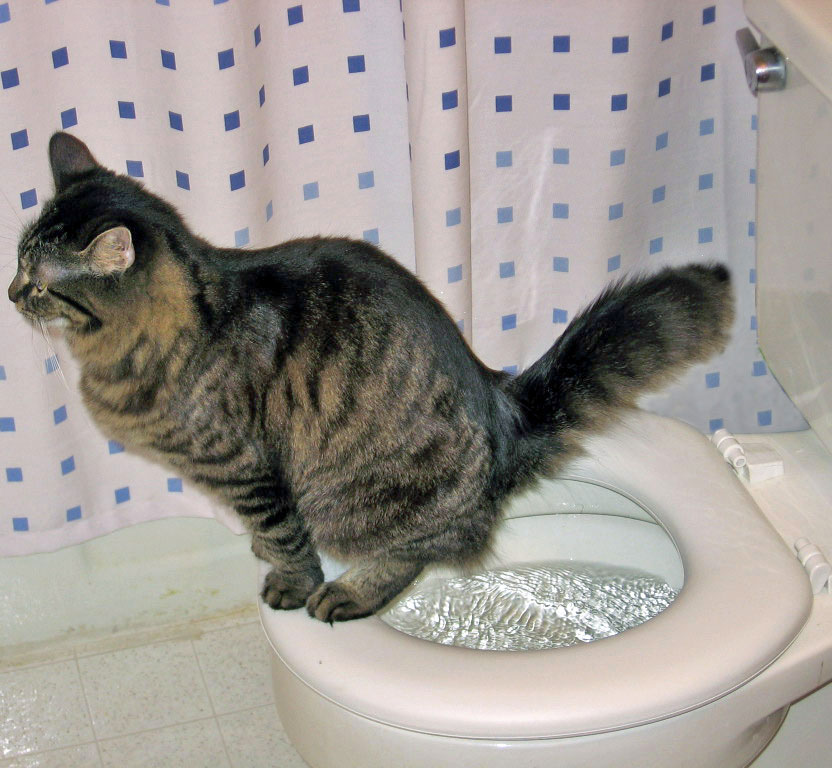Avoid Flush Cat Poop Down Your Toilet - Preserve Your House's Pipe Integrity
Avoid Flush Cat Poop Down Your Toilet - Preserve Your House's Pipe Integrity
Blog Article
We have discovered this post pertaining to How to Dispose of Cat Poop and Litter Without Plastic Bags listed below on the internet and concluded it made sense to relate it with you here.

Introduction
As feline proprietors, it's essential to be mindful of how we take care of our feline friends' waste. While it might appear practical to flush feline poop down the commode, this technique can have destructive effects for both the setting and human health.
Environmental Impact
Purging pet cat poop presents unsafe virus and bloodsuckers into the water supply, positioning a significant threat to marine ecosystems. These impurities can adversely influence aquatic life and concession water high quality.
Health Risks
Along with ecological problems, purging pet cat waste can additionally present health and wellness risks to humans. Cat feces may contain Toxoplasma gondii, a parasite that can create toxoplasmosis-- a possibly serious health problem, especially for pregnant women and people with damaged body immune systems.
Alternatives to Flushing
Thankfully, there are much safer and extra liable methods to get rid of cat poop. Take into consideration the adhering to options:
1. Scoop and Dispose in Trash
The most usual approach of throwing away feline poop is to scoop it into a biodegradable bag and toss it in the trash. Make certain to utilize a devoted trash scoop and throw away the waste without delay.
2. Usage Biodegradable Litter
Select biodegradable pet cat trash made from materials such as corn or wheat. These litters are eco-friendly and can be safely dealt with in the garbage.
3. Bury in the Yard
If you have a lawn, consider hiding cat waste in a marked area far from vegetable yards and water sources. Make certain to dig deep sufficient to prevent contamination of groundwater.
4. Install a Pet Waste Disposal System
Invest in a family pet waste disposal system especially developed for cat waste. These systems make use of enzymes to break down the waste, minimizing odor and ecological impact.
Final thought
Liable family pet ownership expands past supplying food and sanctuary-- it likewise includes proper waste monitoring. By avoiding flushing cat poop down the commode and going with different disposal approaches, we can minimize our ecological footprint and safeguard human wellness.
Why Can’t I Flush Cat Poop?
It Spreads a Parasite
Cats are frequently infected with a parasite called toxoplasma gondii. The parasite causes an infection called toxoplasmosis. It is usually harmless to cats. The parasite only uses cat poop as a host for its eggs. Otherwise, the cat’s immune system usually keeps the infection at low enough levels to maintain its own health. But it does not stop the develop of eggs. These eggs are tiny and surprisingly tough. They may survive for a year before they begin to grow. But that’s the problem.
Our wastewater system is not designed to deal with toxoplasmosis eggs. Instead, most eggs will flush from your toilet into sewers and wastewater management plants. After the sewage is treated for many other harmful things in it, it is typically released into local rivers, lakes, or oceans. Here, the toxoplasmosis eggs can find new hosts, including starfish, crabs, otters, and many other wildlife. For many, this is a significant risk to their health. Toxoplasmosis can also end up infecting water sources that are important for agriculture, which means our deer, pigs, and sheep can get infected too.
Is There Risk to Humans?
There can be a risk to human life from flushing cat poop down the toilet. If you do so, the parasites from your cat’s poop can end up in shellfish, game animals, or livestock. If this meat is then served raw or undercooked, the people who eat it can get sick.
In fact, according to the CDC, 40 million people in the United States are infected with toxoplasma gondii. They get it from exposure to infected seafood, or from some kind of cat poop contamination, like drinking from a stream that is contaminated or touching anything that has come into contact with cat poop. That includes just cleaning a cat litter box.
Most people who get infected with these parasites will not develop any symptoms. However, for pregnant women or for those with compromised immune systems, the parasite can cause severe health problems.
How to Handle Cat Poop
The best way to handle cat poop is actually to clean the box more often. The eggs that the parasite sheds will not become active until one to five days after the cat poops. That means that if you clean daily, you’re much less likely to come into direct contact with infectious eggs.
That said, always dispose of cat poop in the garbage and not down the toilet. Wash your hands before and after you clean the litter box, and bring the bag of poop right outside to your garbage bins.
https://trenchlesssolutionsusa.com/why-cant-i-flush-cat-poop/

Hopefully you liked our topic about How to Dispose of Cat Poop and Litter Without Plastic Bags. Thank you so much for taking a few minutes to read our blog. Do you know anybody else who is curious about the niche? Please feel free to promote it. We love reading our article about Can You Flush Cat Poop Down The Toilet?.
Request Estimate Report this page